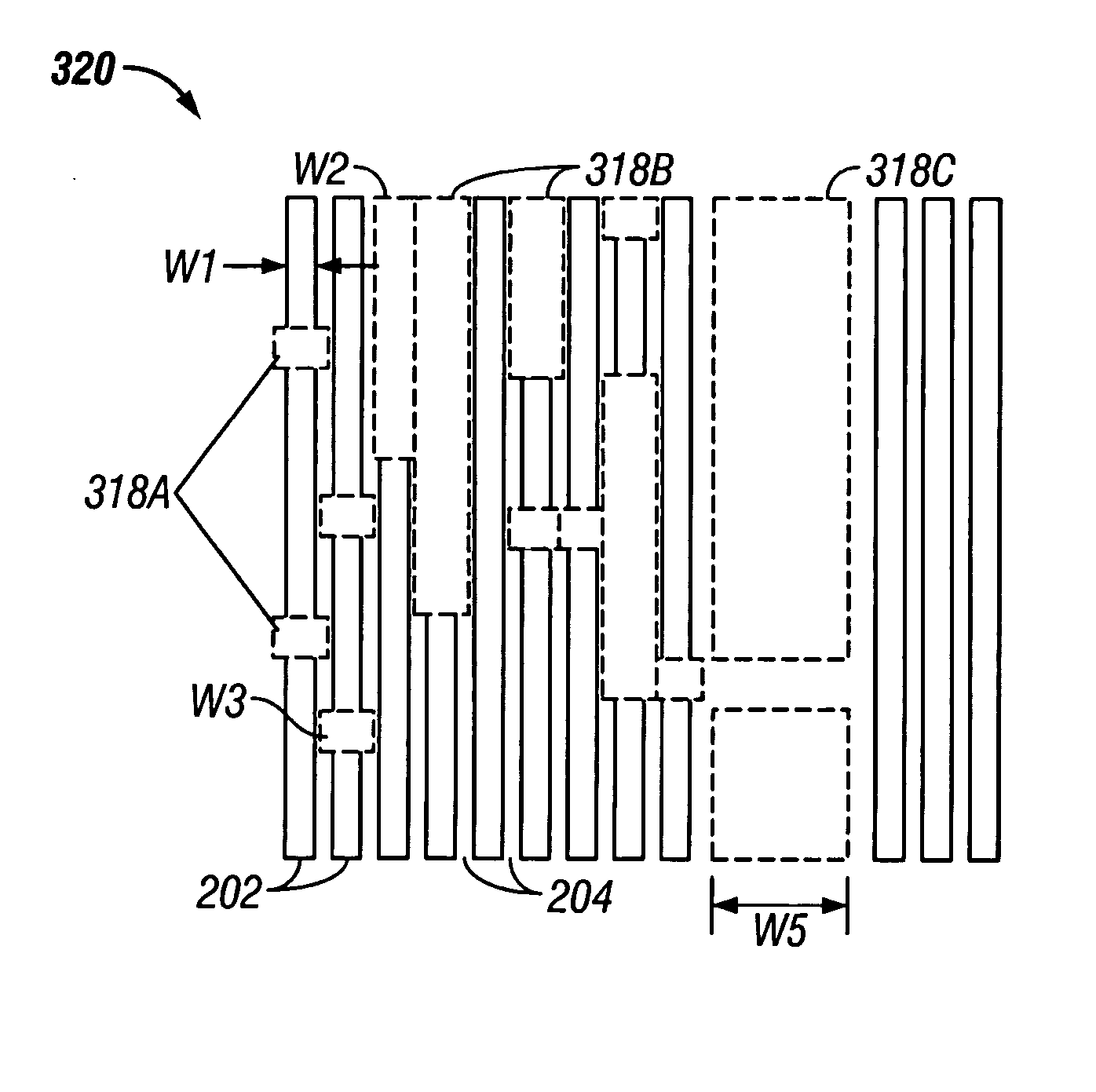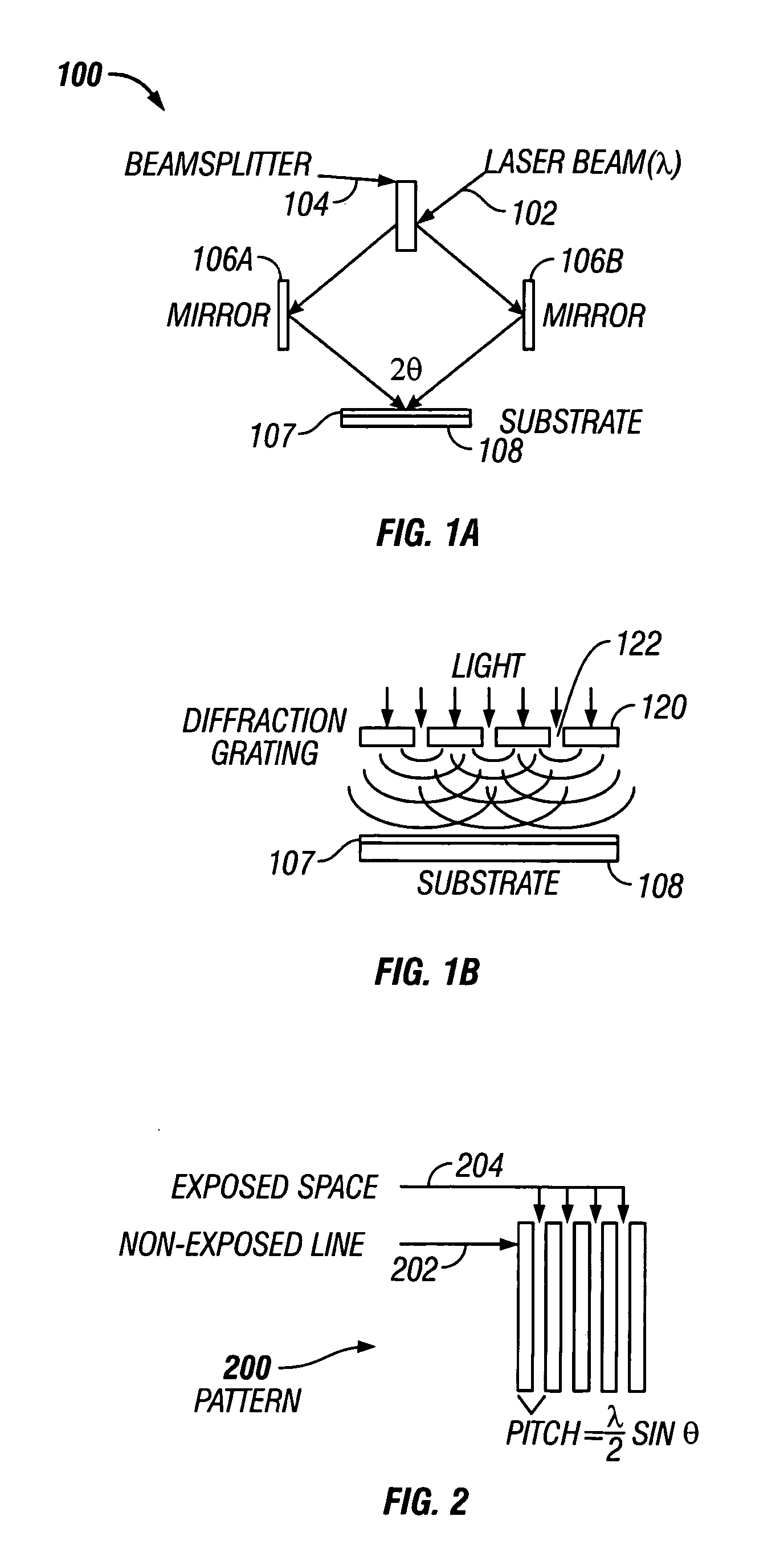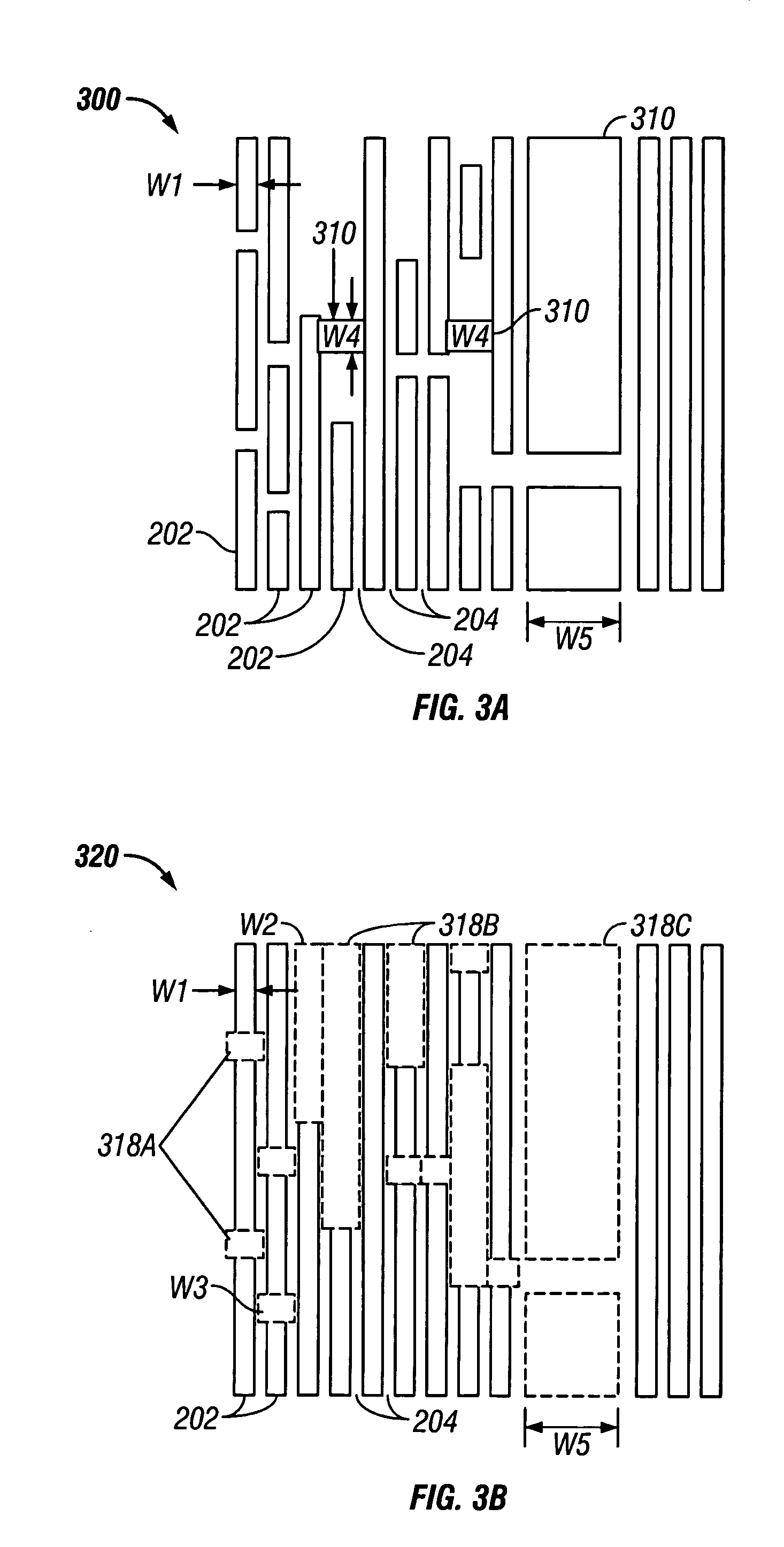Composite optical lithography method for patterning lines of significantly different widths
a technology of optical lithography and patterning lines, which is applied in the direction of photo-taking processes, printing, instruments, etc., can solve the problem that complex lithographic exposure tools may cost more to make and opera
- Summary
- Abstract
- Description
- Claims
- Application Information
AI Technical Summary
Problems solved by technology
Method used
Image
Examples
Embodiment Construction
A conventional patterning technique may use expensive, diffraction-limited, high numerical aperture (NA), high aberration-corrected lens or tools equipped with complex illumination. A conventional patterning technique may also use complicated and expensive masks, which employ various phase shifters and complex optical proximity corrections (OPC).
The present application relates to a composite optical lithography patterning technique, which may form smaller integrated circuit features compared to conventional lithography techniques. The composite patterning technique may provide a higher density of integrated circuit features for a given area on a substrate.
The composite patterning technique may include two or more lithography processes. A first lithography process may use interference lithography to form a periodic alternating pattern of lines of substantially equal width and spaces on a first photoresist. A second lithography process may use a non-interference lithography techniq...
PUM
| Property | Measurement | Unit |
|---|---|---|
| width | aaaaa | aaaaa |
| area | aaaaa | aaaaa |
| wavelength | aaaaa | aaaaa |
Abstract
Description
Claims
Application Information
 Login to View More
Login to View More - R&D
- Intellectual Property
- Life Sciences
- Materials
- Tech Scout
- Unparalleled Data Quality
- Higher Quality Content
- 60% Fewer Hallucinations
Browse by: Latest US Patents, China's latest patents, Technical Efficacy Thesaurus, Application Domain, Technology Topic, Popular Technical Reports.
© 2025 PatSnap. All rights reserved.Legal|Privacy policy|Modern Slavery Act Transparency Statement|Sitemap|About US| Contact US: help@patsnap.com



